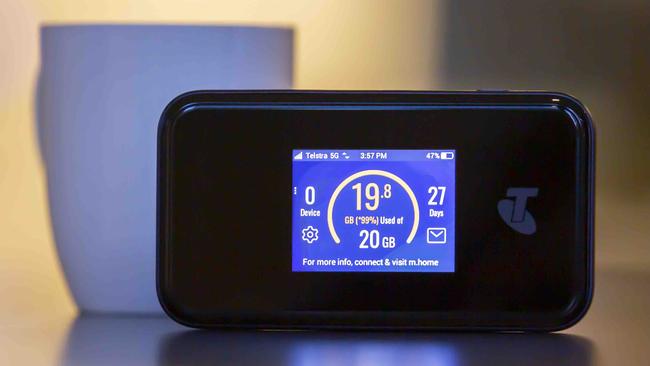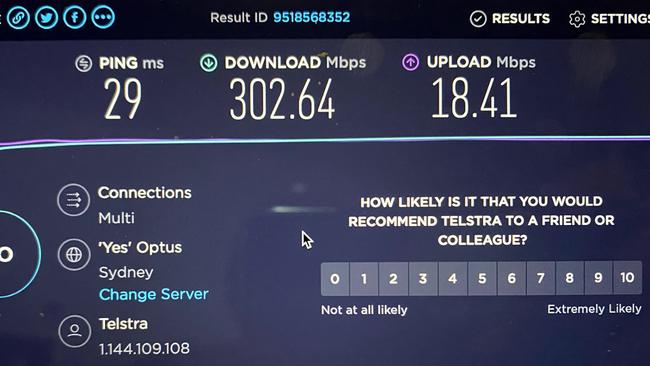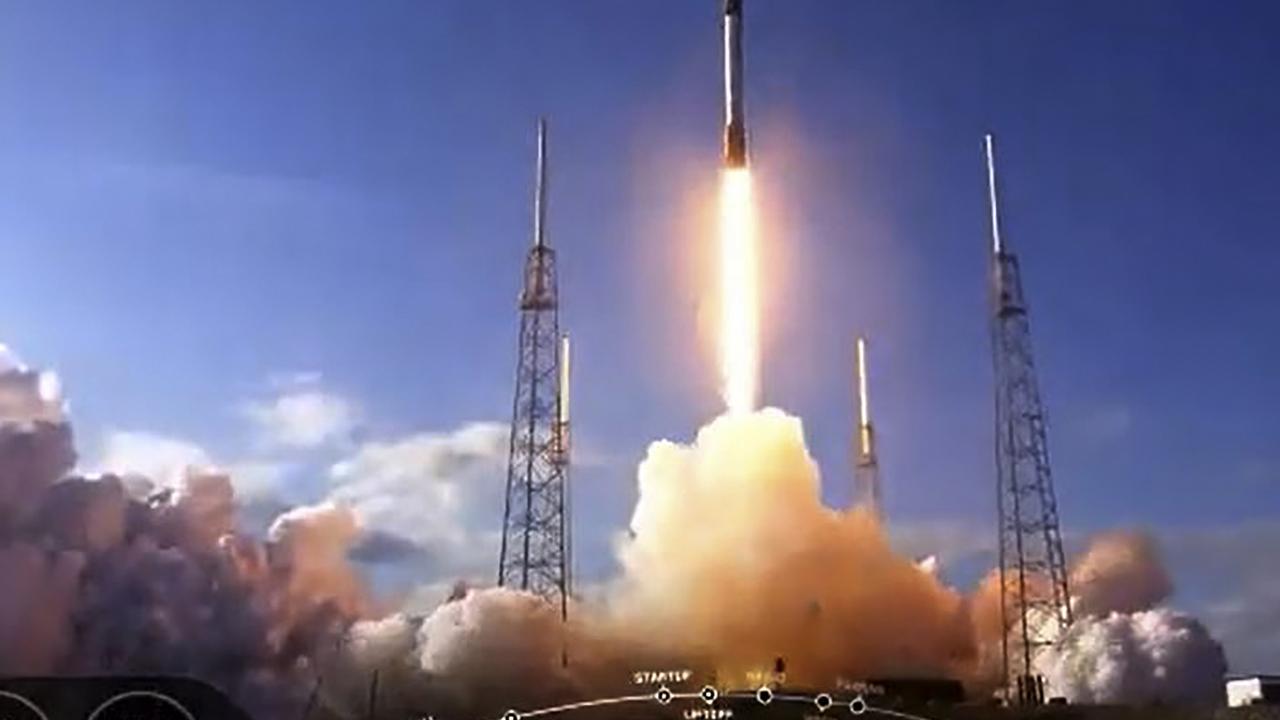REVIEW: Telstra’s 5G hotspot offers blazing speeds
Telstra’s 5G Wi-Fi Pro offers blazing download speeds but upload speeds are another matter

Telstra has released a 5G Wi-Fi hotspot device that you could run your home internet with. You could also run your small business without needing a cable internet service.
You can connect up to 30 Wi-Fi enabled devices with it. If you connect just a few laptops and phones to your home internet, along with a smart TV and a couple of speakers, you should come under that 30 device limit. Add smart lights, internet connected security cameras, a network of speakers, Google and Amazon personal assistants, network gaming systems and Apple HomeKit devices, and you’ll go over this limit.
The hotspot device also has an Ethernet port but I found it useful only for connecting to a single device and I only got it working when linking to my home desktop with an Ethernet to Ethernet connection.
The 5G download speeds are generally excellent if you are in the right spot. I achieved more than 300 megabits per second download around Parramatta, in western Sydney.
5G not only means faster download speeds, it translates into a broader internet highway from your home or office, which means more devices will get online at acceptable speeds.
The issue is upload speeds. While clocking over 300 Mbps downloads speeds I achieved less stellar upload speeds of under 20 Mbps on more than one occasion.
Historically upload speeds have lagged well behind download speeds. We spend more time reading online content and streaming and downloading movies than we do uploading information to the cloud. But our future needs may be different. The move to working at home is an example where we are more likely to share content in both directions.
I asked Telstra whether we’ll see the gap between upload and download narrow over time. A spokesman said hardware plays a role. A base station has more antennas and power than a mobile device, so more data streams can be sent in a given time meaning downloads are faster.
“Frequencies on uplink can’t be aggregated like they can on downlink based on the device specs and international standards,” said the spokesman, adding that this problem wasn’t just with 5G.
Note that I did my tests with a USB-C to USB-C cable connecting a MacBook to the hotspot device and there was still that download/upload speed disparity.

This is Telstra’s second 5G Wi-Fi hotspot device and is a rebranded ZTE MU500. Last year it announced an HTC 5G Hub which supports up to 20 Wi-Fi devices.
Apart from handling more connections, the new 5G hotspot supports millimetre wave or mmWave, a form of 5G with a higher frequency. mmWave handles vastly more traffic in crowded locations and is faster, but works over a shorter range.
mmWave will be particularly advantageous for mass communications at stadiums, transport hubs, railway stations, airports, shopping centres and crowded CBD areas where regular cellular data coverage can be overwhelmed by a high traffic demand. mmWave is capable of handling that. It also is likely to be used in industrial settings.
Telstra’s 5G footprint using 3.6Ghz spectrum is growing rapidly however there’s no commercially available mmWave in Australia yet, except at three Telstra test sites at Parramatta near Sydney, and two on Queensland’s Gold Coast.
That’s because the federal government is yet to auction millimetre wave spectrum and make it available commercially to telcos. With delays caused by the virus, the auction is unlikely to happen until well into 2021, so choosing a 5G Wi-Fi hotspot device for its added mmWave capability is more future proofing.
I tried to access Telstra’s test centre at Parramatta to report mmWave speeds achieved on this device, but the virus ruled out access to the facility. I even visited the roof of a nearby Parramatta city car park where I was tipped off you’d get an mmWave signal from a Telstra broadcast point on a tower above it. However the speed was not exceptional.
Overseas reports indicate you’ll get 2, 3 or 4 Gigabits per second, maybe more. We mere mortals are unlikely to download information at that speed, but it suggests lots of us will be able to access the internet simultaneously at a decent speed wirelessly.
In February this year, Ericsson broke the 5G mmWave speed record with a 4.3Gbps download speed. In April, Samsung aggregated two devices to achieve 8.5Gbps. That’s 8500 Mbps. It makes the NBN high end speed of 100 Mbps look tiny, but it is the cutting edge.
The hotspot’s 4500 milliampere hour battery is rated with nine hours of battery life and there’s fast charging via its USB-C connection. It also supports the current Wi-Fi 6 standard.
The hotspot has a 2.4-inch colour touch screen. You clearly see what devices are attached and can swap networks when roaming. It supports 4G LTE Cat 20 and even old 3G and you slot in a nanoSIMcard to link it to the mobile network.
The hotspot is available for $599 or for $24.95/month over two years and $16.63/month over three years from Telstra stores and Telstra online.
The plans are reasonably priced particularly if you use the hotspot as a replacement for home internet – 5GB/month is $15, 20GB is $25, 60GB is $50 and 200GB is $75. The prices include 5G network access and are month-to-month. The hotspot is not locked to Telstra’s network.


